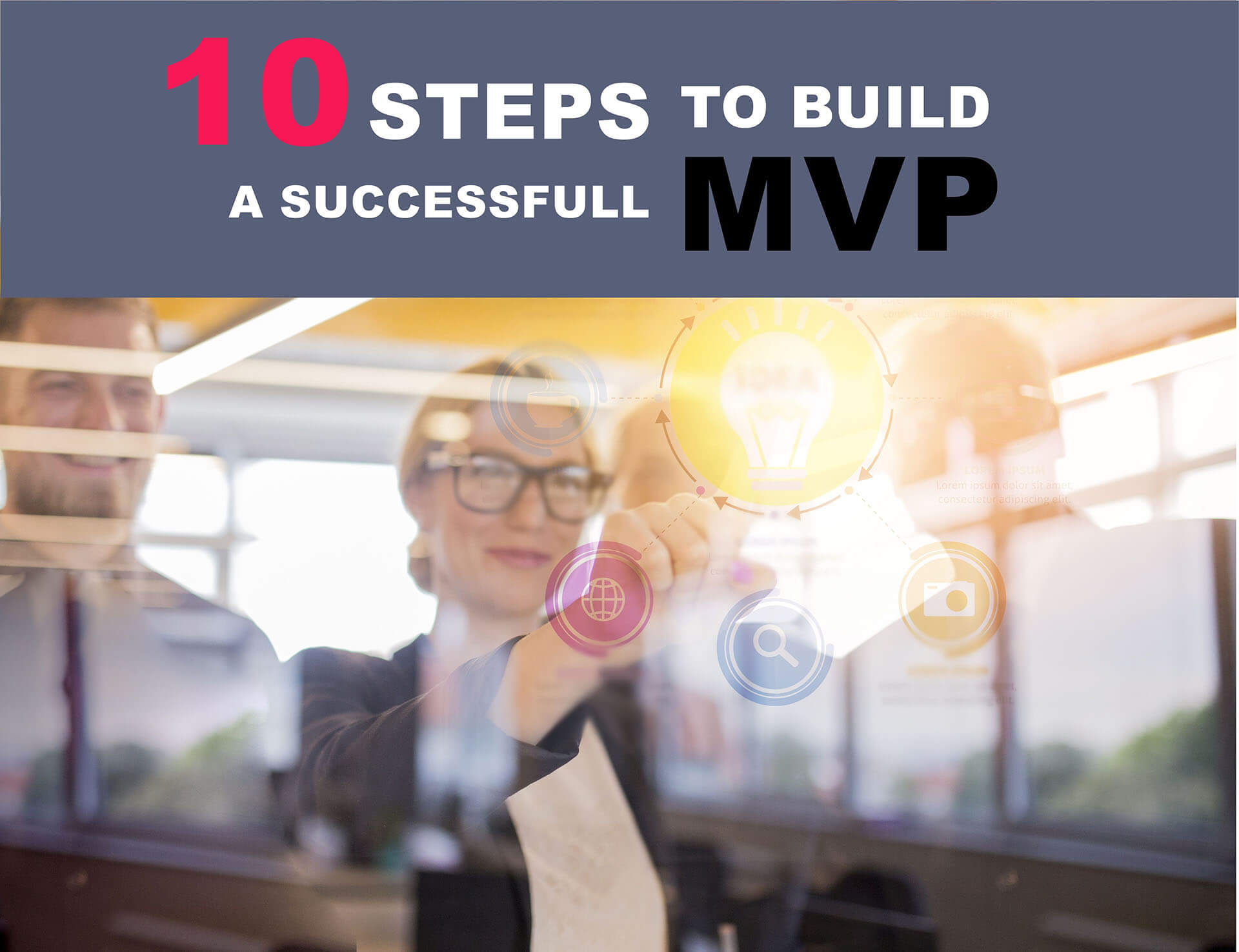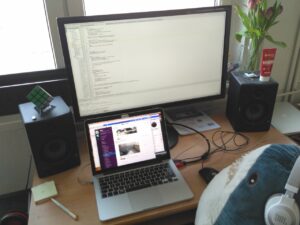When an entrepreneur is struck by an idea or concept, no matter how great it may seem, there is no certainty how the market will respond. This is where an MVP comes in.
Minimum Viable Product is where the core functionalities of a new product are developed and presented to a target audience to assess their response.
The early adopters get to sample the MVP in order to provide feedback, give suggestions and share their opinions on the product. A full set of features is then developed based on the responses.
The Purpose of an MVP
The purpose of the MVP is to test hypotheses by minimizing potential flaws and errors, on top of everything it also works perfectly in terms of time and cost saving. An MVP allows to reduce the initial development cost and introduce the product as quickly as possible to earn first money. It enables to launch an app based on your idea and adhere to a minimal budget.
An MVP aims at achieving a balance between what the product is offering to users and what the users actually need. This element is important for a business to succeed.
Main Benefits of an MVP
Focus on the main idea
An MVP involves building the core of the concept and doesn’t include extra functionalities. A minimal budget is applied as well as a time limit. These elements allow the MVP to be tested with minimal risk.
Response and feedback from users
The potential users’ opinions and responses are invaluable. Feedback helps modify the product to capture the users’ needs. The approach avoids feature stuffing while at the same time leaves room for evolution and development in the future.
Creates a relationship with customer sooner
Looking into the technology adoption stages, an MVP should target early adopters who should give feedback and express their needs about desired features. Naturally this is how you can receive market validation faster.
Having said that, here are ten steps to build a successful MVP.
10 STEPS TO BUILD A SUCCESSFUL MVP

Step 1: Market Research
Market research is a key stage that enables you to identify how your idea fits into the market needs. Several ways can be used to approach this which may include conducting surveys and questionnaires to get a better understanding of the market.
There is also a high possibility that what you are offering is already on the market. Therefore research similar products with which you will eventually compete, also consider all the possibilities to make your idea unique.
Step 2: Find the Niche
Why would anyone want to use your product? What problem does your product solve? Why would I use the product rather than another company’s product?
These are just a few of the critical questions you need to ask yourself at this stage, and hopefully find answers to them. This helps you create value for your customer base. Keep in mind that fulfilling the customer’s desire in the best way possible is your main goal.
Step 3: Define the User Flow

Defining the customer flow involves stepping into your customer’s shoes. What you want to achieve is to reach the primary goal but it’s going to be a process getting there. For example, assuming the goal is purchasing a product, it is essential to consider all the stages the customer has to go through to get there (i.e. purchase a product).
Define the process stages required to reach the main objective. Focus more on basic tasks rather than elements such as finding and buying the product. You should aim at simplifying the whole process and at the same time adding more value to it.
Identify the pain points (problems or inconveniences users encounter) and then write down the gains (the value-add achieved when the pain point is addressed). Comparing and balancing the pains and gains will help you generate features for the app.
Step 4: Come up with a List of Features
At this stage, list all the desired features that you have in mind and want to have in the app. Go through each stage one at a time and establish its intended purposes. Come up with a list of features that you believe will be right for the purpose.
Brainstorming and gathering ideas is key in the creative process and also don’t limit the number of ideas for the features at this stage. Identify all the possible ways to go about each and every stage.
Step 5: Break Down and Prioritize Features (Core and Add-ons)
Ascribe the listed features of each stage into core features and add-ons based on priority. Here, you also need to take the customer’s experience into consideration. The core features exemplify the customer experience while add-ons can be introduced after MVP launch.
Constantly ask yourself engaging questions such as: “How important is this feature for finishing the process?”, “How much value will this feature bring to the customer?” or “How often will this feature be used?”.
This will enable you come up with the minimum possible representation of the working product. This is what an MVP is all about.
Step 6: Build Your MVP
Prioritizing helps you define the scope of the first version of the product. The development team, following these assumptions, is able to create the MVP.
A key reminder is that a prototype is not a substandard version of the final product, but it still should be able to meet customer needs. Therefore, it ought to be easy to use, engaging and suitable for its users.
Step 7: Test Your MVP

The completion of the development phase ushers in the testing process. The first testing stage takes place before the release of the MVP, which is known as the acceptance testing.
It is carried out by the Quality Assurance engineers and the main task is to improve the quality of the product before its release to the market.
Step 8: Deployment
The release of the MVP to the users is is known as deployment.
There are different approaches to the way the MVP is tested. You can take either the alpha testing approach or the beta testing approach or do both.
Alpha testing is a form of internal testing performed by a limited number of people. This can include Quality Engineers, testing teams and sometimes potential users, though, it is still a form of in-house acceptance testing.
Beta testing is carried out by real users in a real environment. During the final testing phase the product is released to external user groups.
Fixing the issues in the beta stage leads to a significant reduction in the development costs as most of the glitches have already been catered for before the final release.
Step 9: Improving and Tweaking
This stage kicks off immediately after the MVP launch. Addressing and dealing with problems which arise from using the product should be treated as an ongoing process as well as a constant struggle and desire for improvement.
However, in the process of improvement feedback from customers plays a vital role. That is why the users should be encouraged to provide you with feedback and your task should be to make it as easy as possible.
The given feedback has to be acknowledged and taken into account in the process of adjusting and refining the product.
Step 10: Measure Success
There are several approaches that can be adopted in order to determine the future success of the product. Here are some the most common, tested and proven, ways to measure the success of an MVP:
Level of engagement
This approach enables you not only to learn about the current value of the product but also predict or estimate its future value. Engagement provides feedback that is invaluable to improve the user’s experience.
Sign-ups
Sign-ups are an indication of user interest levels. Users who sign-up may convert to revenue based on the result of the interest levels.
Percentage of active users
You need to study the users’ behaviors. It is necessary to collect data concerning the amount or length of time the stay logged in on the platform as well as the frequency of the visits. Check the ratings of active users regularly.
Client Acquisition Cost (CAC)
The approach focuses on establishing all incurred costs (and efforts) which result in attracting paying customers. It’s beneficial to know whether your marketing efforts are working or if some adjustments are needed.
CAC = Money spent on traction channel / Number of customers acquired through the channel
Client Lifetime Value (CLV)
CLV measures the amount of time the user spends using the app before uninstalling, or stopping using it.
CLV = (Profit from a user * App usage duration) – Acquisition cost
Churn
Churn shows the percentage of people who have uninstalled, or stopped using your app all together.
Churn = Number of churn per week or month / Number of users at the beginning of the week or month.




